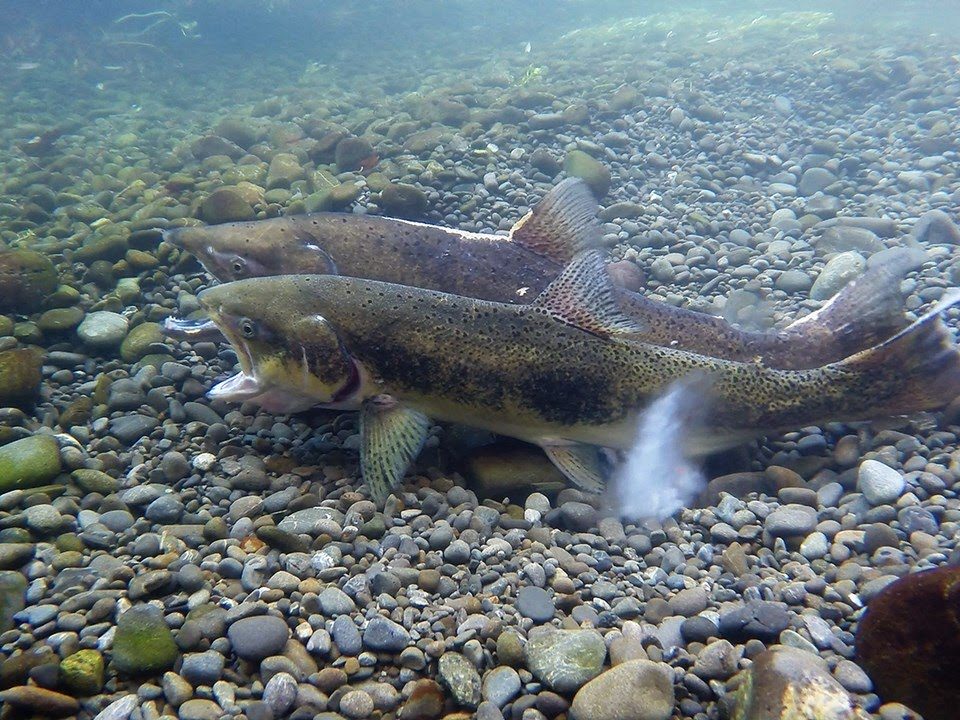
Public River Access
Ensuring Fishing Access to Northwest Waterways
Northwest Steelheaders advocates for the public’s right to access waterways for fishing, boating, and outdoor recreation. According to state and federal laws, citizens own the beds and banks of all navigable and tidally influenced waters. Publicly-owned waterways are managed by the Department of State Lands in Oregon and the Department of Natural Resources in Washington. Over the past 30 years, we have worked to protect and enhance public access to Oregon’s premiere salmon fishing rivers.
We've made successful petitions to Oregon’s State Lands Board to complete navigability studies for the iconic Sandy, John Day, and Trask rivers, resulting in the decision to protect the public’s access to segments of these rivers for recreation. In 2017, we fought for public access to Oswego Lake, taking our case all the way to the Oregon Supreme Court. While the Supreme Court punted it back to the lower court, it concluded that if Oswego Lake is determined to be “among the navigable waterways that the state holds in trust for the public,” then the city of Lake Oswego cannot prevent or control public use.
How is Public Access Determined?
The ownership of “submersible and submerged lands,” which is legalese for the beds and banks of rivers, lakes, streams, beaches, and tidelands, is determined by whether the waters they contain are “navigable.” A navigable water is one that can be traveled using any boat (canoes, kayaks, and rafts included) while a non-navigable water cannot be traveled via boat at any time (an irrigation ditch, for instance). Navigable waterways are owned by the state and are therefore public, while non-navigable waterways can be privately owned.
Public Waters in Oregon
When Oregon became a state in 1859, all waterways and underlying lands that could be used in their natural condition to transport people and goods became state-owned. However, specific waterways or portions of waterways that met this navigability standard were not identified. Many of Oregon’s waterways have still not received a navigability determination, making it difficult for anglers to know whether a given waterway is public or private. State law (ORS 274.040) authorizes the State Land Board to determine if a waterway is navigable, and In 2005, the Oregon Attorney General Hardy Myers issued a formal opinion describing what public rights exist to use waterways, even if they have not been given an official navigability determination. Relying on numerous Oregon Supreme Court rulings between 1869 and 1936, Myers stated that the public is allowed to use the surface of a waterway in Oregon for activities unless the waterway isn’t wide, deep, or long enough for a boat to pass along it, or unless the activity is illegal. Allowed uses include fishing, navigation, recreation, and other activities requiring the use of water. Always be sure to check the Oregon Department of Fish and Wildlife regulations to see when, how, and where you may fish from a boat on any waterway.
Public Waters in Washington
When Washington became a state in 1889, Article XVII of its newly minted Constitution granted ownership of “beds and shores of all navigable waters in the state” to the public so that no one could monopolize the means of transportation, fishing, and trade. While some states gave adjacent landowners water rights to navigable waterways, Washington did not. The Department of Natural Resources is responsible for 2.4 million acres of state aquatic land and is directed by law to encourage direct public use and access, foster water-dependent uses, ensure environmental protection, provide opportunities for the harvest of renewable resources (such as geoducks and other shellfish), and generate income from the use of aquatic lands by authorizing use permits for that are consistent with the other goals.





